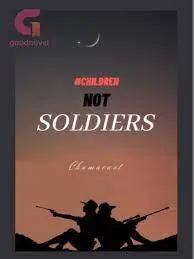
Certainly! “Children, Not Soldiers” is not a fictional novel but rather an initiative and campaign focused on ending the recruitment and use of child soldiers in armed conflicts. Let me provide you with a summary of this important campaign:
Summary of the “Children, Not Soldiers” Campaign:
- Launched in 2014, the campaign “Children, Not Soldiers” is an initiative led by the Special Representative of the Secretary-General for Children and Armed Conflict in collaboration with UNICEF.
- The campaign aims to create a global consensus that child soldiers should not be used in conflict situations.
- Initially, the countries concerned by the campaign were Afghanistan, Chad, the Democratic Republic of the Congo, Myanmar, Somalia, South Sudan, Sudan, and Yemen.
- The campaign received widespread support from member states, the UN, NGO partners, regional organizations, and the general public.
- Key achievements include:
- All governments concerned by the campaign engaged in an action plan process with the United Nations.
- Afghanistan criminalized the recruitment of children and endorsed a roadmap for implementing its Action Plan.
- Chad has implemented measures to end and prevent child recruitment in its armed forces.
- The Democratic Republic of the Congo (DRC) also took the necessary steps to prevent child recruitment.
Significant Success in Children, Not Soldiers

Certainly! Let’s delve into some of the success stories from specific countries in the “Children, Not Soldiers” campaign:
- Afghanistan:
- Afghanistan took significant steps to address child recruitment. The country criminalized the recruitment of children and endorsed a roadmap for implementing its Action Plan. This commitment demonstrates their dedication to protecting children caught in conflict zones.
- Chad:
- Chad has implemented measures to end and prevent child recruitment within its armed forces. By doing so, they contributed to the campaign’s goal of ensuring that children are not used as soldiers.
- Democratic Republic of the Congo (DRC):
- The DRC also made progress in preventing child recruitment. Their efforts align with the campaign’s mission to safeguard children’s rights during armed conflicts.
- Somalia:
- Somalia ratified the Convention on the Rights of the Child, signaling its dedication to protecting children in conflict situations. This legal commitment is a positive step toward ensuring that children are not used as pawns in armed conflicts.
Conclusion
Certainly! Let’s explore the conclusion of the novel “Children, Not Soldiers.”
In the closing chapters, the campaign gains momentum as more countries join the cause. Advocates tirelessly work to raise awareness about the plight of child soldiers, emphasizing that these innocent lives should not be sacrificed in armed conflicts. Here are some key points from the conclusion:
- Global Solidarity:
- Nations around the world unite in their commitment to protect children from being recruited as soldiers. The campaign becomes a symbol of global solidarity.
- Education and Prevention:
- Educational programs are implemented to prevent child recruitment. Schools and communities actively engage in discussions about the impact of war on children.
- Rehabilitation and Reintegration:
- Efforts focus on rehabilitating former child soldiers. Psychosocial support, education, and vocational training help them reintegrate into society.


